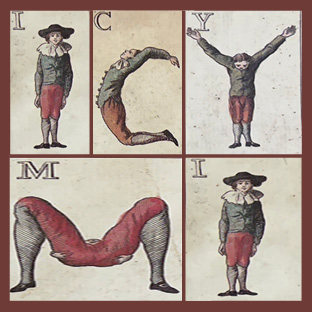We took on the task and committed ourselves to a self-examination and realized our website needed a makeover.
 We create marketing strategies and communications programs for others. It was time to take a dose of our own medicine.
We create marketing strategies and communications programs for others. It was time to take a dose of our own medicine.
Once upon a time a Flash-based brochure-ware website showing our portfolio was sufficient. But now we have Web 2.0 and “Business as usual” is over. The new economy demands that we revisit our marketing messaging and the way we deliver communications.
We took on the task and committed ourselves to a self-examination that led to one thing.
Our website needed a makeover.
Why are we doing this?
Our design communications firm specializes in branding and identity. We ask our clients:
1. Who is your target audience?
2. What impressions do you want to make?
3. What information do you want to convey?
4. What does this project have to do in order for you to consider it a success?
Now it was time to answer these questions ourselves. Our clients are employee communication consultants, human resource managers, chief marketing officers and marketing and communication specialists. We want to make our best impression in design communications to a wide range of prospects. From a new identity for lani–dig your dog, a dog shampoo, to a national wellness initiative for Pfizer, the largest drug company in the world, we are there.
We had a lot of success requirements:
- A design that is easy-to-access by prospects.
- A structure based on what visitors want to see, rather than just what we want to show.
- A portfolio that could be reshuffled by different subject matter.
- Blog links, urls, and interactive videos to be right there on the website to get a quick impression of a project. An engaged user can then delve into the links, related projects and blog posts to learn more about the project. This is called “progressive disclosure.” With this approach we are revealing a little bit of information at a time, users can select and dig deeper into the areas they are most interested in.
- A searchable website to increase our web traffic.
- The ability to add new projects quickly.
And, as Norman Cherubino stated at the outset, “We need to be proud of the design and we need to demonstrate that this is a model project for our clients.” We were beginning to sound like our own worst client.
How we did it.
We set-up weekly meetings and treated this assignment as if it were from a paying client. Our design director, Jim Keller, dreamed up a visual solution that reflected our ideas of who we were as a creative firm while our technology team led by Roland Dubois examined different Content Management Systems (CMS) and showed us what could and could not be done. Norman and I studied the competition’s websites and worked on the overall vision and content. Each week Jim would share design solutions and Roland would demonstrate how the designs could be programmed. We created a visual solution with a systematic approach that would allow us to populate the website with case studies that could be expanded and updated. Sometimes we would adjust the design, because after all form does follow function, and other times we’d send the tech team back to their drawing board to find another solution that supported our design.
Steve Job’s one-button solution
One goal was to celebrate our best work, and to represent the work that we show in our business presentations. We also needed to be able to update entries and add new projects. Norman insisted that the Home Page be simple. “Let’s have a big image with just three buttons on it,” he said as he challenged the designers and tech team. We’ve been influenced by Steve Job’s challenge to the Apple designers and developers to create computers and ipods with no more than one button. It forced us to focus on the importance of each component, and to organize and prioritize carefully. When we examined our work from the perspective of clients and prospects we noticed three key areas: Health and Wellness; Financial Services; and Corporate Identity. So we created a graphic with three clickable buttons to highlight these areas. We established just three pull-down tabs to cover: About Us, Portfolio and Blog. We then re-wrote the “voice” of the website using the language our clients speak.
But waitthere’s more!
We also wanted to be able to organize the website offerings by Industry and Media type. So we created a list of tags and categories and labeled each project by specialty area, industry and service. Then we wanted users to be able to go directly to a specific client so we created a client list with clickable links and expanded our Industry Listings’ for organizing work that went beyond our three key areas. Then we created modules for highlighting special projects and breaking news, where we can promote www.MasterpieceYourself.com and feature special blog news.
What’s with the CMS?
I got a taste of working in the new virtual environment. When I asked for printouts of the screens for proofreading, the tech team sent me to the staging area where the website was residing as a virtual work-in-progress. I complained,“ I want to read the screens on the train, mark them up and bring them back tomorrow!” They replied, “It’s a website, you really should review it on screen the way the users will view it.” They finally relented and I was given my prints. But when I returned to work with the marked-up pages, I was told that I would need to use the CMS system and enter the corrections myself. My first inclination was to pull rank and insist that they do the corrections, but then I was persuaded to at least try it. “This way you’ll see the beauty of the CMS,” I was told. I was surprised at how simple it was to input the edits and it was gratifying to see them update so quickly on the website.
SEO-ing is believing.
One of the requirements of the new website was that is must be searchable by web search engines like Google, Bing and Yahoo. This is where Search Engine Optimization (SEO) comes into play. Our old website was built in Flash and it was not easily recognized by the search engines. The new website is HTML-based, which is why the design had to work within certain system requirements. The organization of this website includes key words and tags that label each project by various category. The fact that the website is sortable and searchable increased its ability to be seen by Google. Key words and descriptive text was now “live” in HTML, rather than lost in Flash animation. With the Google Analytics tool we can now track not only how many visitors we’ve had, but also where they go, what key words they used to find us and what pages they viewed. For example, now we can tell that in a given month 806 visitors used 36 different keywords and arrived from 46 traffic sources.
It’s hard to turn the equation around and become your own client. Norman and I kept switching hats from budgets and scheduling to demanding quality design and attention to detail. (Well, perhaps it really was no different from every other assignment after all.) We now have a more robust web solution that offers users more choices in how they navigate our portfolio. With the new Content Management System we’ve been able to add new links and tinker with the content. Now that we’ve finished that it’s probably time to redo our logo.
David Langton is a principal at Langton Cherubino Group, a branding and interactive design agency in New York. www.langtoncherubino.com
Graphic Design USA magazine named David Langton and Norman Cherubino the principals at the design communications firm, Langton Cherubino Group as “People to Watch in 2009.”
Back to Insights



